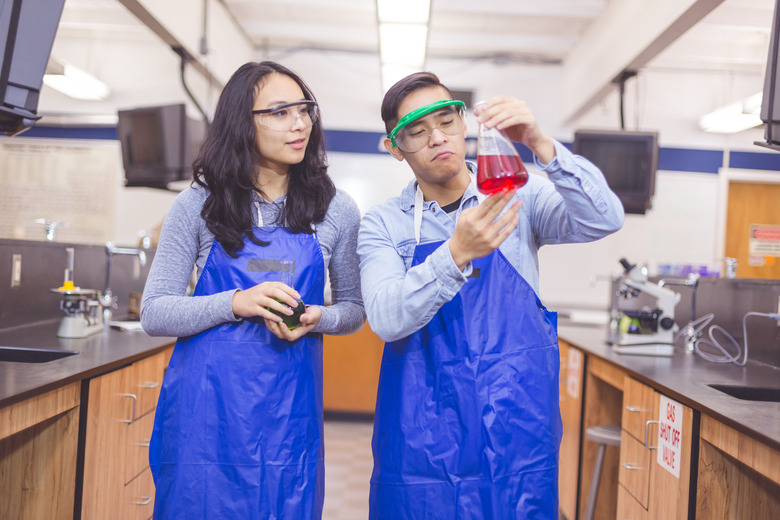How To Find How Many Atoms Are Present In A Gram Sample
Atoms are extremely small relative to the scale of human life. Scientists use a unit called a mole to describe large quantities of atoms and other small things. One mole is equal to 6.022 x 10^23 particles. This number is called Avogadro's number. These particles can be individual atoms, molecules of a compound or any other particle being observed. In order to calculate the number of atoms in a one gram sample of any substance, you must calculate the number of moles of that substance based on its molar mass. Then, you can use Avogadro's number to calculate the number of particles.
Real-Life Application
Real-Life Application
A real-life application of Avogrado's number applies to the iconic example of examining the density of what weighs more: a ton of feather or a ton of something very heavy like bricks or metal weights. The lighter feathers require a greater number to create the same density as the heavier objects.
Find Atomic Mass
Find Atomic Mass
Before determining atomic mass, you need to look up the elements on the periodic table and note their atomic mass numbers under the element's chemical symbol. Pure elements have an atomic mass that is also the molar mass or amount of grams per mole.
Add Atomic Mass
Add Atomic Mass
First, add the atomic mass of each atom in the compound. The atomic mass of an element is the mass of one mole of that element. Atomic masses are given in atomic mass units. One atomic mass unit is equal to one gram per mole. When you add these together for a compound, you get the molar mass of that compound. For example, silicon dioxide consists of one silicon atom and two oxygen atoms. The atomic mass of silicon is 28 grams and the atomic mass of oxygen is 16 grams. Therefore, the total mass of one mole of silicon dioxide is 60 grams.
Divide Number of Moles
Divide Number of Moles
Divide one gram by the molar mass of the compound. This gives the number of moles of the compound in a one gram sample. As an example, one gram of silicon dioxide divided by 60 grams per mole gives around 0.0167 moles of silicon dioxide.
Multiply by Avogadro's Number
Multiply by Avogadro's Number
Next, multiply the number of moles by Avogadro's number. This formula yields the number of molecules in one gram. For example, 0.0167 moles of silicon dioxide times 6.022 x 10^23 equals around 1 x 10^22 molecules of silicon dioxide.
Multiply by Atom Number
Multiply by Atom Number
Finally, multiple by the number of atoms in one molecule. For example, each molecule of silicon dioxide contains three atoms. Therefore, there are around 3 x 10^22 atoms in one gram of silicon dioxide.
Cite This Article
MLA
Murmson, Serm. "How To Find How Many Atoms Are Present In A Gram Sample" sciencing.com, https://www.sciencing.com/how-to-find-how-many-atoms-are-present-in-a-gram-sample-12076409/. 25 June 2018.
APA
Murmson, Serm. (2018, June 25). How To Find How Many Atoms Are Present In A Gram Sample. sciencing.com. Retrieved from https://www.sciencing.com/how-to-find-how-many-atoms-are-present-in-a-gram-sample-12076409/
Chicago
Murmson, Serm. How To Find How Many Atoms Are Present In A Gram Sample last modified March 24, 2022. https://www.sciencing.com/how-to-find-how-many-atoms-are-present-in-a-gram-sample-12076409/
